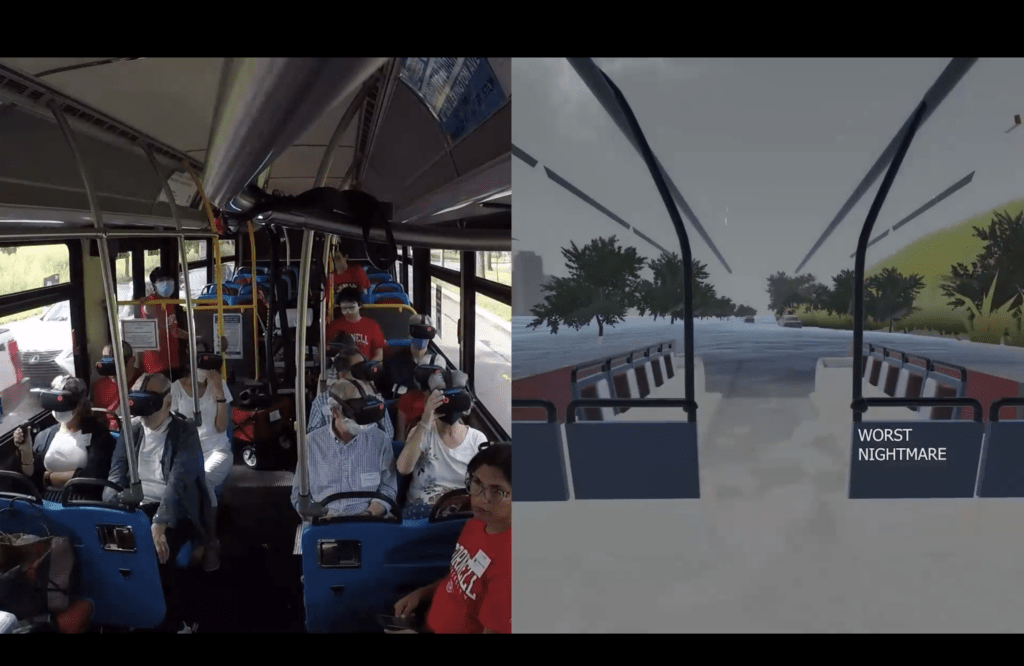It’s called Communal eXtended-Reality, a cutting-edge blend of the physical and digital worlds designed to engage communities in new ways through virtual reality.
A travelling experience on an iconic bus took passengers and visitors through the winding streets of Roosevelt Island in New York. Passengers were transported to a realm where virtual environments merged seamlessly with their real surroundings. Guided by audio narration, they encountered nine striking scenes depicting the growing impacts of climate change, with a particular focus on rising flood waters.
Projections suggest that a 100-year flood could submerge most of Roosevelt Island. Despite these alarming predictions, research indicates that such a catastrophe doesn’t seem real to many people in the public.
This disconnect between knowledge and urgency is precisely what the Communal eXtended-Reality (CXR) system aims to address. The technology – which synchronises real-world movement with virtual overlays – provides a fully immersive, shared extended reality (XR) experience designed to promote a unified understanding of urgent challenges such as climate change.
This integration allows participants to experience a shared reality while physically travelling through the environment, making the experience communal and deeply rooted in the place.
According to the creators, CXR can play a crucial role in urban planning by involving communities in discussions about new developments. By providing a clear and immersive presentation of proposed changes, it helps to reduce misunderstandings and conflicts, promoting a more informed and collaborative approach to future planning.



